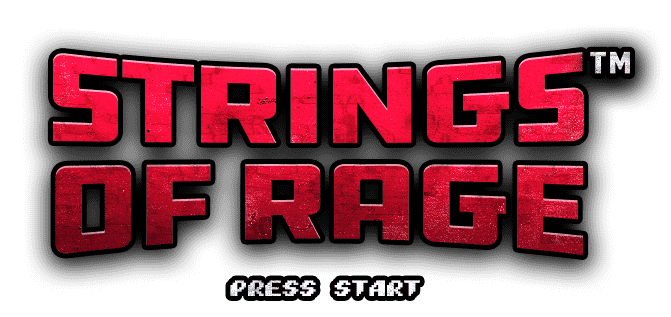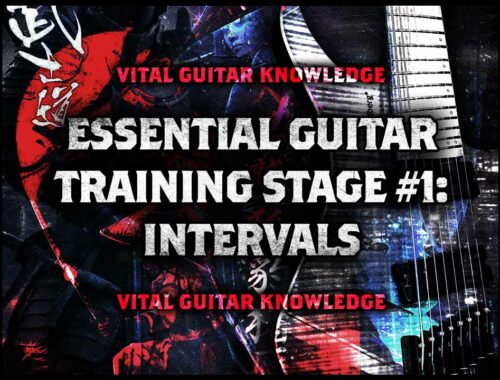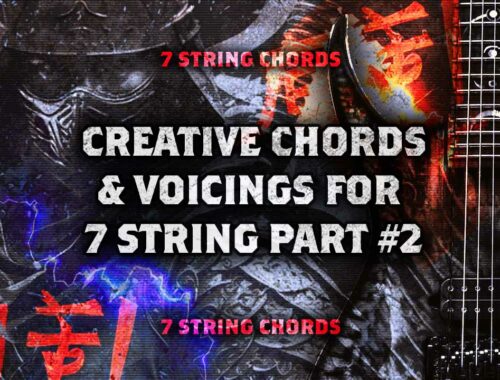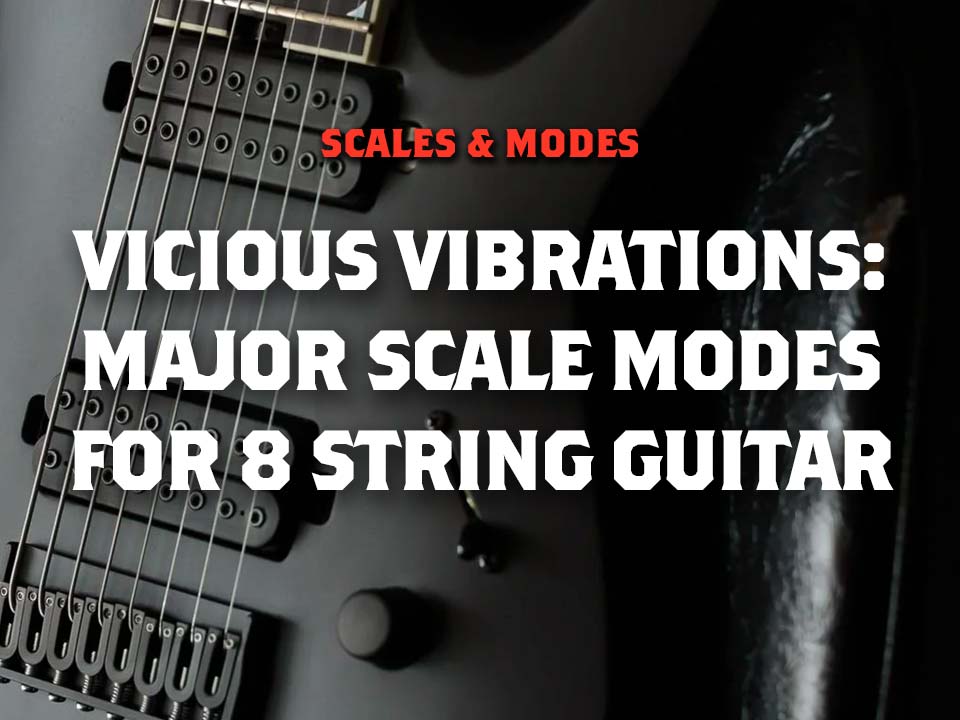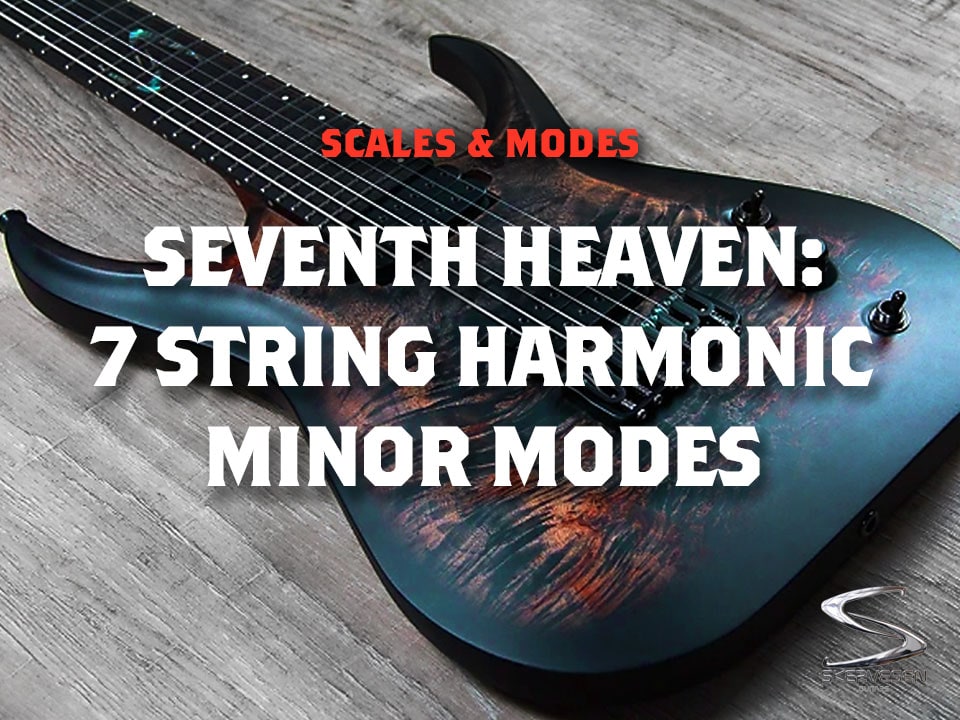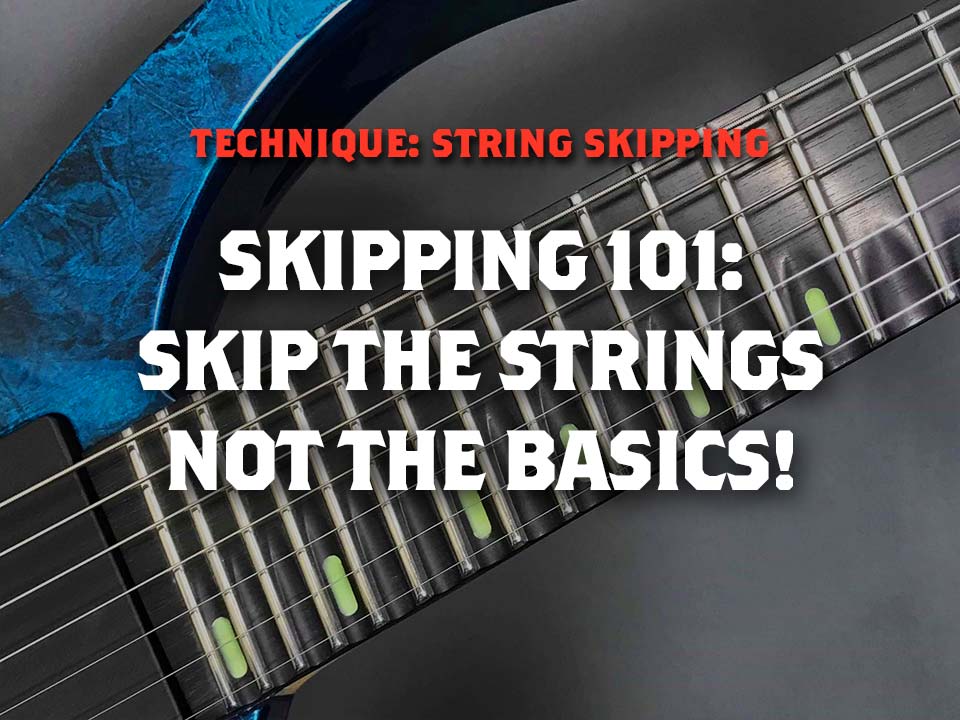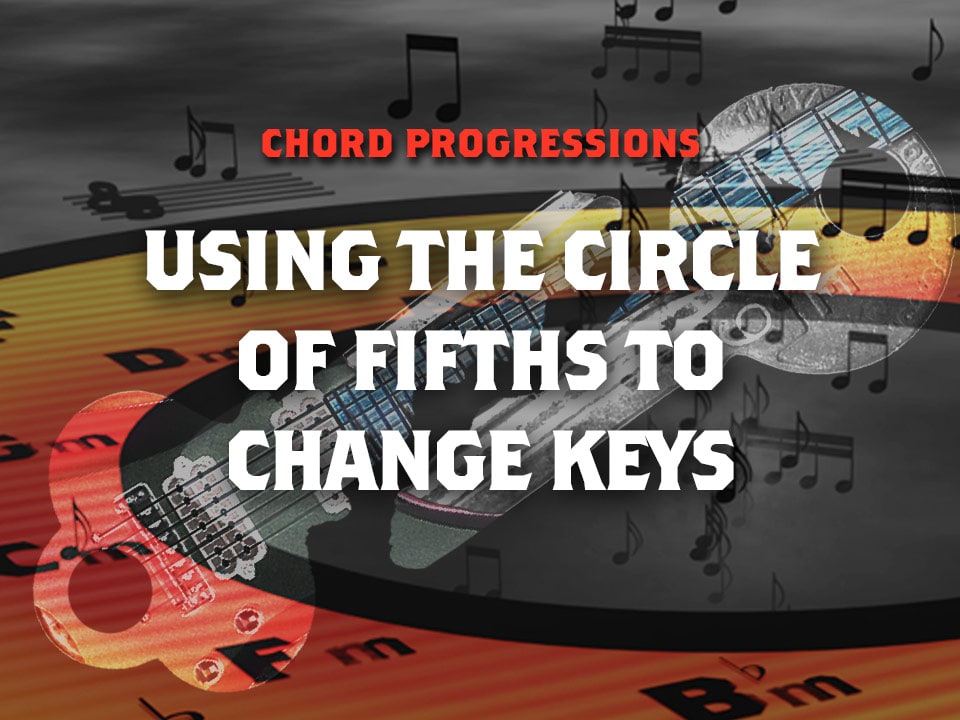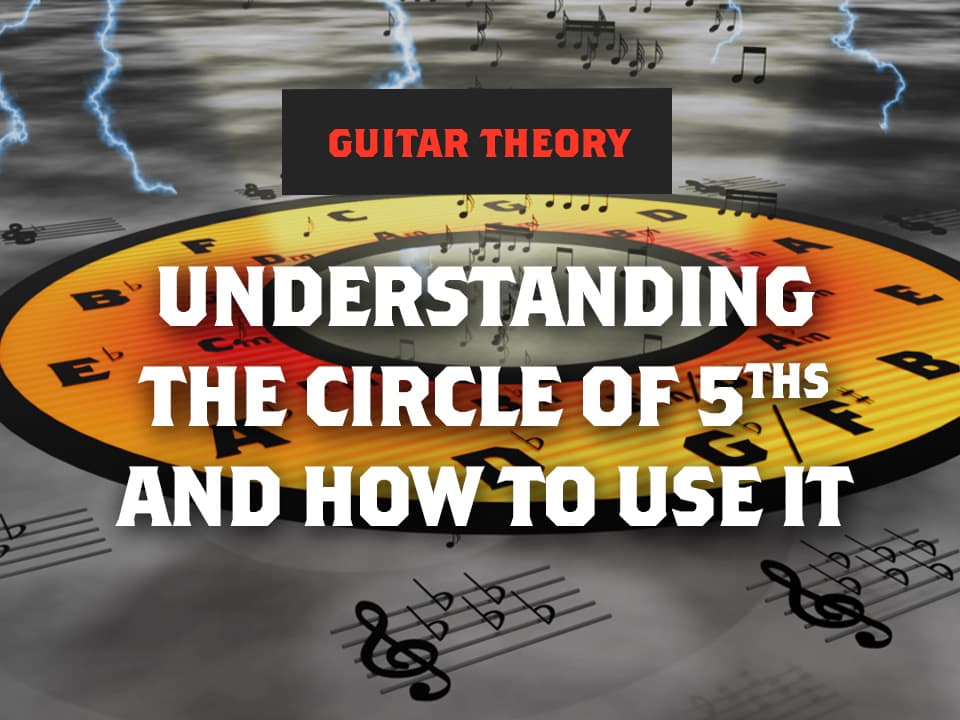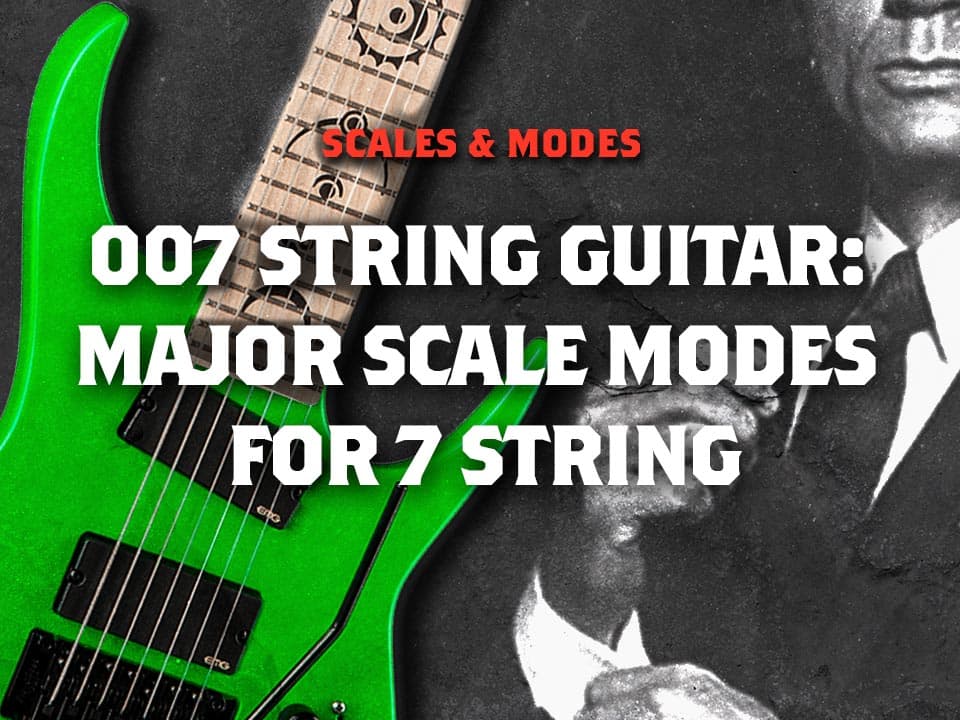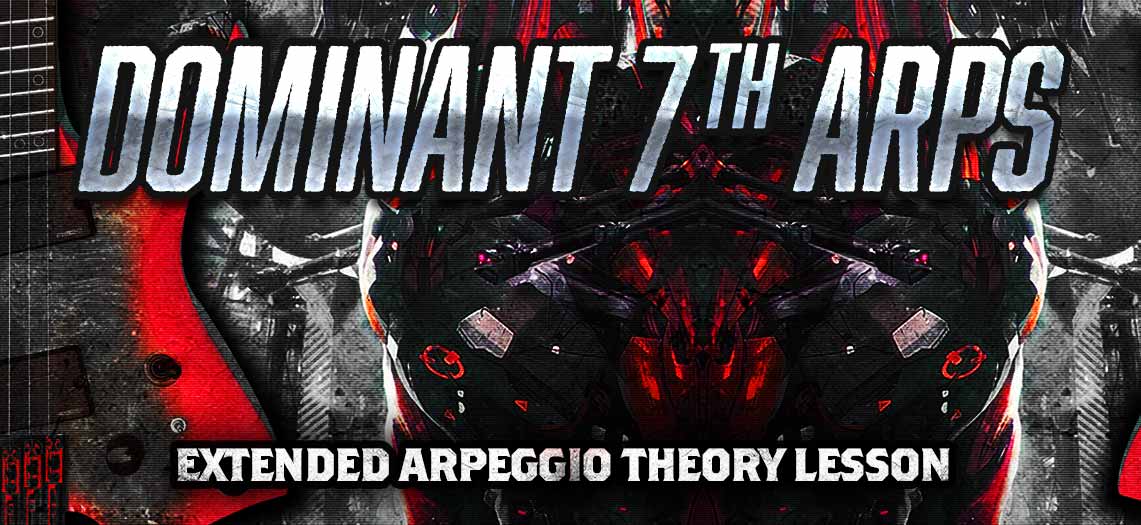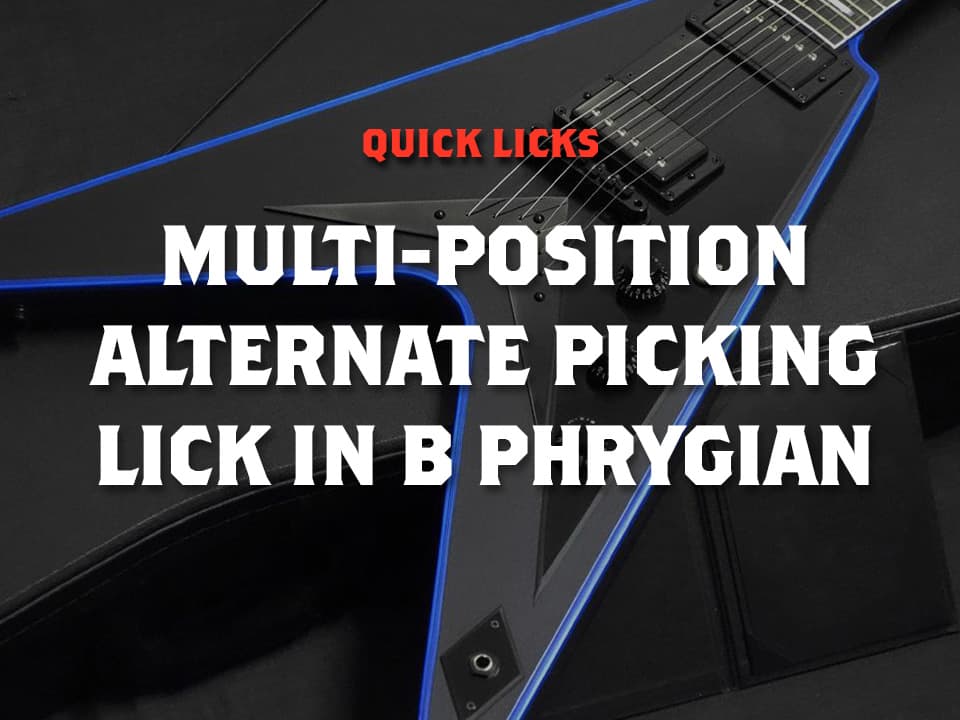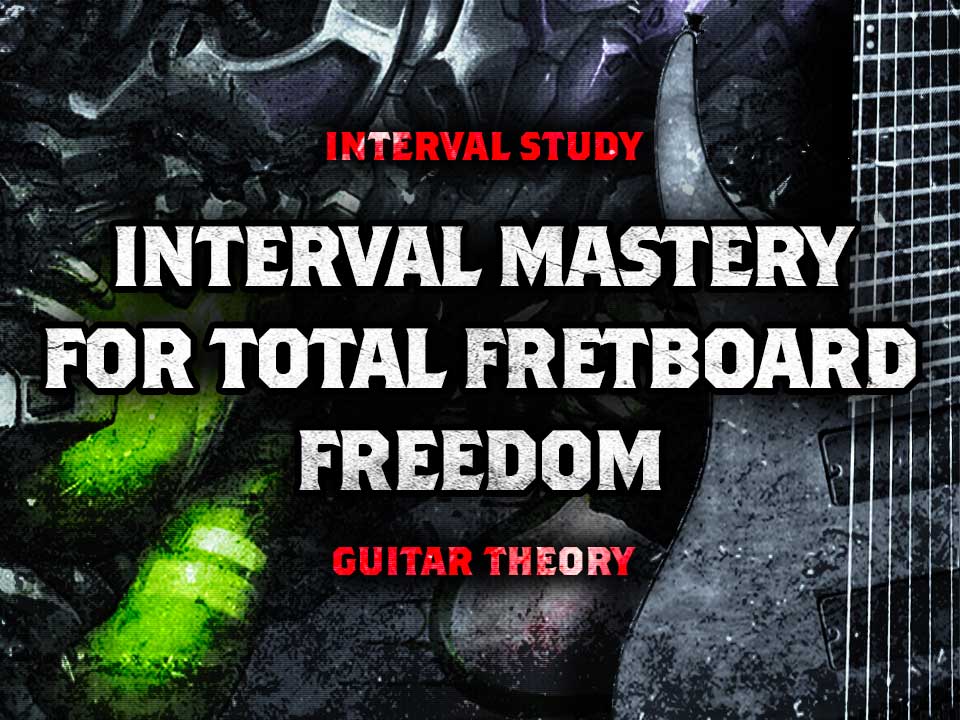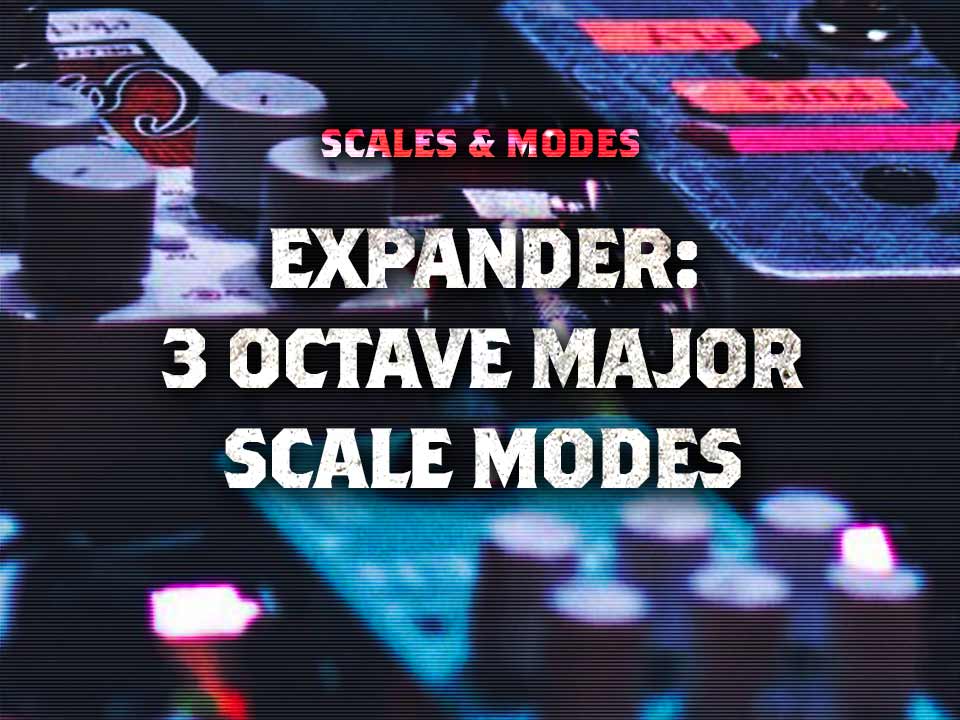Welcome back! Today we’re going to be exploring the major scale modes in the baritonal jungle that is the Low F# 8 string guitar! By understanding how your scales work across these extended range instruments, you’ll build up an enviable arsenal of musical weaponry to have at your disposal.
These modes for 8 string guitar cover 4 octaves in just one position. The true milage that can be achieved on an 8 string guitar quickly becomes apparent! If you started your guitar journey on an 8 string then great! We are seeing a lot of new players get into extended range guitars from the beginning. There’s only more to be explored and realised with these extended range instruments so lets get into it!
Continue ReadingImbue your 7th string with the exotic sounds of the Harmonic Minor modes! We’re back with another extended ra(n)ge scales and modes lesson, this time extending the exotic Harmonic Minor Scale into 3nps format for 7 String Guitar. We’ll look at how the 7 string modes reference the 3 octave and 6 string versions as well.
Let’s take a look at the 7 string Harmonic Minor Modes! If you know the harmonic minor modes for 6 string guitar then this will be made even easier since we can reference these. However if you started your guitar story on a 7 string then this will be a helpful starting point. If you don’t know the modes at all it might be worthwhile getting comfortable with these first before progressing into these more advanced ideas.
Continue ReadingWelcome to episode 2, if you missed episode 1 you can check it out here. In this part we will be combining string skipping with some tapping using our middle and ring fingers (T2 and T3).
We’ll be in the key of E minor and are going to learn 4 chords. We will play these using string skipping and tapping to create arpeggios in sequence to form a progression. Each pattern can be practiced individually until you get the hang of them and then we can link them together at the end.
Continue ReadingToday we’re going to look at some basic string skipping drills to help improve your speed and precision. The string skipping technique, as the name suggests, involves skipping over one or more strings to the next.
For example you might be playing on the low E string and then skip the A string and move straight to the D string. Remember to practice these string skipping basics slowly until you have built up your ‘muscle memory’. In this lesson we will be focusing on string skipping whilst alternate picking.
Continue ReadingToday we’re going to look at some ways of playing chords with high gain amp settings.
With high gain, power chords sound great, basic triads can sound pretty good too depending on your tone.
7th Chords and beyond however, start to sound ‘muddy’ and unclear like this:
Continue ReadingIn this quick licks webisode we’re going to look at extending the basic 5 string sweep picked arpeggio shapes to make them sound much bigger and more interesting. This is a good exercise in beginning to advance your sweep picking ability. Lets look at some easy extensions you can add to the two most common sweep picked arpeggio shapes.
These will make your arpeggios sound much bigger and cover more of the neck. These extended sweep picking ideas are the next step in becoming an efficient sweep picker. The basic 5 string shapes now cover 6 strings, however we’ll do this in a way that still feels familiar. It’s important that you apply the correct fingering technique to ensure these sound as smooth as silk.
Continue ReadingWelcome guitar fans! In this webisode we’re going to learn to extend the modes of melodic minor into a 3 octave format. This will help you explore more of the guitar neck using these modes. We’ll also learn some modal theory to understand how to use these modes in practice.
If you’ve already checked out the three octave major scale modes or the three octave harmonic minor modes you’ll know how this three octave formatting works. However in this lesson we’ll be looking at the 3 octave melodic minor modes. Because this is a really simple formula you can apply it to any scale or mode and cover more fretboard. As a result you’ll add more diversity and possibility to your lead playing.
Continue ReadingIn this lesson we’re going continue to build on our knowledge of music theory and learn how to use the Circle of Fifths to change keys.
Let’s take a simple chord progression and put it under the microscope. Analyzing an example like this using the circle of fifths will help you to write your own music and ideas using this concept. If you’ve started to learn about music theory the following progression might seem ‘wrong’:
E Major – D Major – G Major – D Major
This is because there is no Major key which contains all three of these chords. If you want to learn about which chords occur in each key check out this post.
If I play that progression E – D – G – D, it sounds like this:
Today we’re going to look at the ‘Circle of Fifths’. You may have come across the term before, or the ‘Circle of Fourths’, or just ‘The Circle’.
Check out the diagram below and then we’ll look at what it means and why its useful.
As you can see if we move clockwise in The Circle of Fifths we go up in fifths, e.g. C to G. If we move anti-clockwise we go up in fourths, e.g. C to F. The inner ring shows the relative minor key of each Major key. For example the relative minor to C Maj is Am. The relative minor of G Maj is Em etc.
Continue ReadingThis episode we’re going to look at the 3nps modes for extended range 7 string guitar. The tuning will be B E A D G B E. If you want to know more about modal theory then check out this post for some extended ideas on how the modes for 7 string guitar work. Let’s Go!
Let’s take a look at the major scale modes for 7 string guitar. If you know the modes for 6 string guitar then this will be made even easier since we can reference these. However if you started your guitar story on a 7 string then this will be a helpful starting point. You can also check out the pentatonics for 7 string if you’re not ready for these yet. If you don’t know the modes at all it might be worthwhile getting comfortable with these first. You can check out the 6 string major scale modes here.
Continue ReadingPlaying through a scale is a great way to warm up your fingers before going into an intense practice session or playing a gig. Today we’re going to look at a simple warmup sequence using the Mixolydian mode, the fifth mode of the Major scale.
You can play this warmup sequence across 6, 7 or 8 strings or extend it further if you have more.
Warming up is very important, especially if you are going to be playing fast, complex or intense riffs. The last thing you want is to strain the ligaments in your hand during practice. Warming up helps prevent repetitive strain injuries and the dreaded condition of carpal tunnel syndrome.
Continue ReadingToday we’re going to look a little ripper of an alternate picking lick. This one ascends across all 6 strings from the low E string. This is an interesting idea because we’re using sequences across groupings of two strings. Let’s Go! Full Shred Ahead! If you want a quick overview of the lesson then Download the Tab.
This alternate picking lick is based around a little sequence that begins on fret 10. The lick starts with a descending idea. Once you’ve got the basic mechanics of the lick under your fingers it’s then simply a case of moving it through the positions.
Continue ReadingIn this lesson we’re going to look at a creative way to approach sweep picking using the dorian mode as our road map. We’ll also take these ideas to make a blazing sequence across all six strings.
Conventionally a lot of players will tell you that sweep picking is essentially taking chords and playing them in a single note, or arpeggiated fashion. While this is true we can break out of the norm by using our mode shapes to create new and exciting possibilities for advanced sweep picking ideas.
Continue ReadingIn this episode we’re going to take a detailed look at intervals, what they are and the sound quality of each interval type. An understanding of intervals is absolutely essential to avoid the guesswork when navigating the guitar neck not just with lead lines but creative chord voicings too.
Let’s understand the intervals for guitar. The most underestimated weapon in your arsenal of musical weaponry. Essentially intervals are simply the distance between notes, however with a little understanding you can harness the true power of intervals to achieve any sound you want. We’ll also learn about interval note quality and how this can help unlock songwriting creativity.
Welcome! If you’re reading this you’re probably looking to take your modal playing to the next level. If you want to know how to start covering more of the neck with your lead lines then check this out.
These 3 Octave Major Scale Modes work in a 3 and 4nps linear fashion. You’ll have a 7 note pattern across 2 strings. The 8th note is simply the octave of the root. These shapes are great fun and super easy to play because of the way they repeat. For each mode we’ll have a different 7 note, 2 string pattern. Once you know one shape for each mode you can simply repeat this pattern every 2 strings in octaves.
Continue ReadingTremolo picking involves picking the same note multiple times in a row, usually at least four. This technique originates from classical guitar and other stringed instruments. The idea was to create modulations in volume by finger picking a note multiple times with harder and softer plucking.
In rock and metal Tremolo Picking is more common to use the technique to maintain volume by giving each note less time to decay. It also provides more attack giving a harsher, more aggressive sound.
Continue Reading